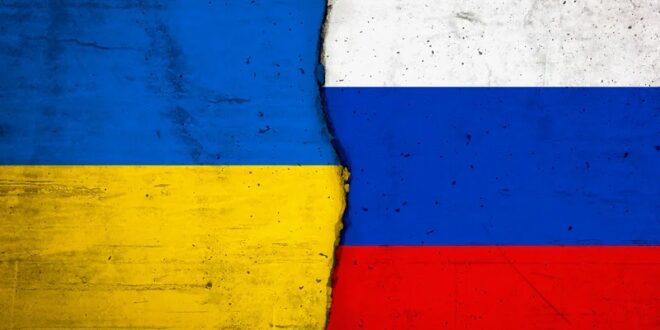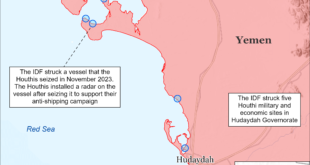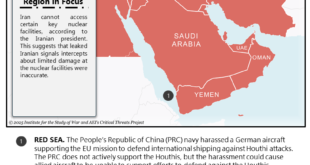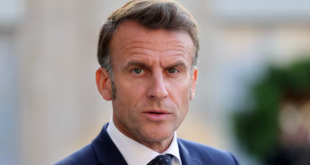June 22, 2022 is the 81st anniversary of the launch of Operation Barbarossa, Germany’s invasion of the Soviet Union in 1941, when fighting on a massive scale truly began in the Second World War. It was the largest military campaign in the history of humanity. This date is being especially noted during Russia’s invasion of Ukraine, because Hitler’s attempt to conquer the vast territories that lay to the East has a great deal of relevance for the present-day war. To begin with, until 2022, the Eastern Front of World War II was the last time a war ever took place on the territory of Ukraine, with much of the fighting happening here. It was the culmination of immense warfare and strife that Ukraine experienced throughout the early twentieth century. After World War II ended, the region would remain in relative peace and calm for several decades, which Putin’s invasion has only now ended. It isn’t that much of a surprise, because, as the modern world advances, new opportunities keep being created for conflict to break out and the region containing the land of Ukraine has clearly shown itself to harbor great potential for this. Remember, it is this vast, flat environment in which the monumental violence and savagery of Hitler’s Eastern Front was possible.
We also must know that World War II, though fought for very traditional imperialistic and national ambitions, would forever define the nature of Europe. It gave Europe its current shape – it was in 1945 that Ukraine’s current boundaries were fixed, for example, even if it would not be an independent nation for decades – and established fault-lines in the fabric of European society lasting to this day. This is how World War II in Eastern Europe continues to echo through today’s war and why people are widely turning to its memory.
Both Russia and Ukraine are accused of being heirs to Nazism. In Russia’s case, that is because they are invading another country, like Hitler did, and now the same security order created in response to World War II is responding to this war. Poland’s President Duda, for instance, recently said talking with Putin was like talking with Hitler. But memory of World War II is also extensively driving Russia’s campaign against Ukraine. Putin has been using it to persuade the Russian people that they are faced with dangerous foreign enemies like they were eighty years ago and his justification for invading Ukraine is to “denazify” the country. That’s because anti-Russian nationalism was a significant force in Ukraine during the Soviet era and many Ukrainian nationalists sided with the Nazis during their occupation of Ukraine. That includes Ukraine’s most famous independence fighter, Stepan Bandera, and his movement and others like it even participated in the Holocaust.
After Ukraine won its independence in 1991, particular right-wing elements continue to be active in the country and there has been a lot of glorification of Ukrainian figures who were complicit with the Nazis. Ukrainian right-wingers generally regard their country’s worst period to be the Holodomor perpetrated by Stalin rather than the Nazi occupation, which alone is a stark divide between Ukraine and Russia. As such, Putin has argued that pro-Nazi attitudes remain a driving force in Ukraine, even though Ukrainian collaboration with the Germans was driven by force of momentary circumstance. Stepan Bandera was imprisoned by the Nazis from 1941 to 1944 because he refused to retract his call for Ukrainian statehood. So why would Ukrainians carry on the Nazi legacy for decades after Nazism’s collapse? Putin also considers Ukraine’s desire to pivot towards the West to be a Nazi move.
Now, here is where World War II most deeply reverberates through what is happening today. Putin is waging war against Ukraine to prevent it from joining the European Union and NATO. What this has in common with Hitler’s invasion of Eastern Europe is that both are a clash between an advancing West and a reactive East. By the beginning of the twentieth century, Western Europe, along with adjoining parts of Eastern Europe, was highly advanced and developed. Western countries were the source of all modernization and progress. Russia, on the other hand, though powerful, lagged far behind, struggling to modernize itself. It was a feudal country until 1861 and continued to stagnate under Tsarist rule. The 1917 revolution overthrew the monarchy and aristocracy and the vast empire adopted communism. Though opposed to each other, both Tsarist Russia and Communist Russia were alternative models of the same thing, Russia’s incompatibility with the West. Under communism, the Soviet Union was drawn into conflict first with the fascist West in World War II and then the liberal West in the Cold War. After the communist experiment failed, Russia has continued to struggle to keep up and still is going down a different path than the most advanced countries.
By contrast, Germany is a part of the Western world and Nazism was an abhorrent alternative model of what the West could be, compared to the liberty and democracy pioneered by France, Britain, and America. When he came to power, Hitler inherited one of the world’s most advanced and powerful countries. There is a consistent theme regarding imperialism in the modern era, which is that nations take over places and societies less advanced than them. For example, in the 1930s, Japan was a highly industrialized country and China was not, so Japan invaded China in what it considered the best path forward for East Asia. European colonization of the world was the same. Hitler’s invasion of Russia was, in essence, the most extreme application of this principle. By taking over Russian territory in Europe, so he must have felt, his nation could make better use of the region’s potential and bring it into the fold of modern progress, with all the inhabitants subjugated by the Germans, of course, or wiped out.
The eastward expansion of the European Union and NATO in the last thirty years is basically a peaceful and benign version of this. If Ukraine joined these organizations, it would represent the West, which remains at the forefront of modern civilization, extending its sphere of influence into the eastern depths of Europe. Ukraine, like Russia, continues to face great difficulties like corruption and underdevelopment. As a result, Westerners might end up taking over everything in Ukraine in order to bring the nation up-to-date, with the nation being drastically reshaped. This could then potentially impact the political and social order within Russia, and Belarus, and Georgia. It is an order that, in some way or another, remains fundamentally opposed to the Western path, as shown by how Kerensky’s 1917 push towards democracy quickly ended, as also was Boris Yeltsin’s to an extent.
This must be why Putin is so alarmed. He must consider expanding Western influence a resumption of the same process that Hitler was pursuing and, therefore, pro-Western Ukrainians are like the Nazi collaborators before them. After experiencing the brutal invasion by the Nazis, Russians became highly wary of the Western world through the Cold War, and they probably still are. Putin probably recognizes that just as the Soviet Union, because of its backwardness, was very vulnerable to military aggression by Nazi Germany, so the post-Soviet nations continue to be vulnerable to Western dominance, which could have disruptive and perhaps unforeseeable consequences for the order of civilization that exists in the realm belonging to Russia.
 Eurasia Press & News
Eurasia Press & News



